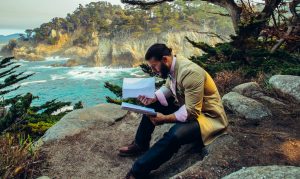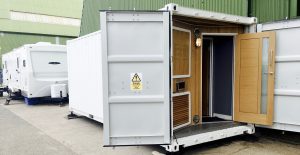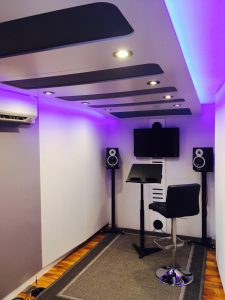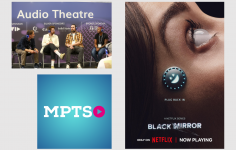In Part 1 of this series, we focussed on the craft of ADR from the Actor’s perspective.
Why? Because that’s ultimately what it’s all about. There’s no amount of software that can provoke or extract the desired performance, only capture it and help the process flow. One of the biggest obstacles to getting perfect ADR is the context of where and when it’s captured – the studio itself and the distance (geographically and emotionally) from the original performance. Is a clinical-feeling room full of strangers, weeks or months after the scene was shot likely to be conducive to the desired result?
Legendary sound designer Randy Thom once said, in ’An Open Letter From Your Sound Department’ in 1999:
“This lousy attitude about the possibility of getting anything wonderful out of an ADR session turns, of course, into a self fulfilling prophecy. Essentially no effort is typically put into giving the ADR recording experience the level of excitement, energy, and exploration that characterized the film set when the cameras were rolling.
The result is that ADR performances almost always lack the “life” of the original. They’re more-or-less in sync, and they’re intelligible. Why not record ADR on location?”
 Indeed, shooting actors’ ADR on-set is something that has been talked about, on and off, for some time. This is no surprise; per Randy’s rationale.
Indeed, shooting actors’ ADR on-set is something that has been talked about, on and off, for some time. This is no surprise; per Randy’s rationale.
Double Oscar winning Production Sound Mixer Chris Munro offers a pragmatic justification in his interview with The Call Sheet in 2011:
“The things that currently cause problems are that many cameras and even some lighting equipment have noisy fans in. It’s as if the designers have no idea that the equipment would be used on a film set where sound may be an issue and I’m often surprised that these problems are not recognised before going on set. At the same time ADR has become less popular with directors wanting to use much more original dialogue.”
On set ADR is happening. It’s simply the exception rather than the rule, and often somewhat thrown together. In this article we’ll look at how and why it can be preferable and two substantial and purpose-built approaches currently used for bringing on set ADR capability to a production.
Full disclosure, in the interests of transparency: One of these solutions – SpaceCrate – has been introduced by a recently formed company of which the author and co-director of Resurface is a co-founder and Managing Director.
Capturing the Director’s intent with on set ADR
The logic behind on set ADR seems self-evident, and powerfully so.
If (as we explored in Part 1) actors – on the whole – dislike doing ADR, then it stands to reason that shooting it on set would get their vote too. They’re physically there, in the moment they’ve just been directed to deliver, and have been preparing to deliver for months. If ADR can be shot in character, in (or close to) ‘the moment’ then that can only be a good thing creatively. A consequential benefit appears to be that ADR shot in this way tends to be better, and tends naturally to match sync better. This in turn saves time (= money) in editorial.
It’s also worth remembering that they’re there. Think about the exponentially complex and financially challenging task of trying to co-ordinate multiple ‘A’ list actors, once they’re off the current project, out of the country and committed to their next role / promotional tour / vacation / life in general. If you can remove the complexity, travel, logistics and cost from scheduling cast members for ADR sessions, then that can represent a significant financial benefit to a production.
Capturing on-set ADR can be problematic, film sets by their very nature are busy bustling environments, crews are often large, running into 100’s, all of whom need the catering and amenities of any small village of people. If you’re in a field miles from civilisation, isolating your actor from this environment can be difficult. Purpose built sound stages are usually in large film lot facilities, with accompanying studios. As many of you will know an editing suite and booth on a lot are often a very inconvenient distance from the set and their co-ordinating post production departments are commonly booked on another production.
These many and various needs and challenges are what have underpinned two current solutions catering to the on set ADR requirements of film productions, YurtADR and SpaceCrate.
The brainchild of two very experienced exponents of TV and Film sound, Max Hoskins and Milos Stojanovic, is YurtADR. This system is a custom-designed and patented acoustic tent which, when combined with the right portable recording kit and the know-how of Max and Milos, becomes an easily-deployed environment in which to capture audio, wherever that location might be. Max Hoskins explains the necessity from which their invention was born:
“As professional Sound Editors with nearly 40 years of combined experience we know how important dialogue sound is. Simply put; without a clean dialogue track there is little room for a big score and lush sound effects.
Over the years we have noticed an increasing demand for good ADR, which can sometimes prove difficult or impossible to achieve. Along with additional costs involved in organising and transporting actors to recording studios and schedules becoming ever tighter. We designed and developed an advanced portable system that can be easily set up and used on location.”
Max and Milos’s approach has found favour, having been used on a host of Film and TV projects including Alien : Covenant, Da Vinci’s Demons and Jason Bourne. Max continues:
“Our system has proven to be a very successful, cost effective alternative to conventional studio recording and a great benefit in coordinating actor’s time when filming away on location”
No-one can hear you scream
 Born of the same set of needs is SpaceCrate. Addressing precisely these creative, logistical and financial considerations; albeit from a different angle. SpaceCrate is a professional spec, studio-grade audio recording and mixing environment. Built on the platform of the standard 20 foot shipping container.
Born of the same set of needs is SpaceCrate. Addressing precisely these creative, logistical and financial considerations; albeit from a different angle. SpaceCrate is a professional spec, studio-grade audio recording and mixing environment. Built on the platform of the standard 20 foot shipping container.
Being a shipping container, SpaceCrate can be easily and inexpensively transported almost anywhere on earth using pre-existing standard infrastructure. The result is an air-conditioned, soundproofed and acoustically modelled studio on-set. Ready to be used for a number of purposes, including ADR recording.
 Launched in June 2017, SpaceCrate’s first real-life use was as an ‘ADR Trailer’ on a major feature film set. ADR Mixer Rob Edwards describes his experience on that project:
Launched in June 2017, SpaceCrate’s first real-life use was as an ‘ADR Trailer’ on a major feature film set. ADR Mixer Rob Edwards describes his experience on that project:
“Initially, I was slightly concerned about how this job would pan out due to the very noticeable and constant external noise issues. The environment was extremely busy with the transportation of set design pieces and general set building noise.
The idea was to be placed as near to the main entrance of the set as possible so the cast could pop in and record their ADR lines with as little interference to their schedule as possible.
If I’m honest, It felt like Christmas when the SpaceCrate arrived. SpaceCrate allowed me to record with minimal noise disturbance from the busy external set surroundings. I was able to record freely in a comfortable, air conditioned and acoustically controlled environment and get some fantastic results.
The SpaceCrate was a huge hit with all of the cast as well as the director who appreciated its slick design, ease of location and the overall flexibility it offered. This job would have been impossible to pull off without it”
Here to stay
Despite this, on set ADR remains an exceptional approach. Often a get-out-of-jail-card played when a project involves reshoots or unforeseen additional photography, or when the schedule has gone sideways for whatever reason, as schedules will tend to do.
Perhaps this is simply an entirely understandable artefact of the traditional approach. The way has always been to wait until the edit is established in post before calling cast back for ADR, by which time the shoot has long-since wrapped.
There are also traditional delineations between Production and Post to overcome. After all, it’s only at this stage that takes have been selected and a good percentage of ADR needs can be known. As we established in Part 1, much of what’s needed in ADR is additional script or a change in emphasis dictated by the edit, none of which would typically be apparent when the cameras are still rolling.
At the same time, the changing face of content creation is tipping the balance towards an earlier edit, more layers of executive oversight (and they’ll want to hear clean dialogue) and to a reliance on ADR by default, rather than away from it. The ever-increasing use of green screen in TV and Film – of all genres – being just one example. As a rule of thumb: if there’s a wind machine on set, you’re going to be doing ADR.
Given that simple solutions such as those highlighted above exist, there’s no reason why ADR can’t fit nicely into the daily happenings of filming. Certainly the on set ADR approach helps the Director and Actors cover more of the needs of the film. If the production is wrestling with the cost and complexity of ADR, then it’s worth a fresh look at the when, where and how.
If you’re involved in on set recording or post production for TV and film we’d be keen to hear about your experiences and your opinions on ADR.


